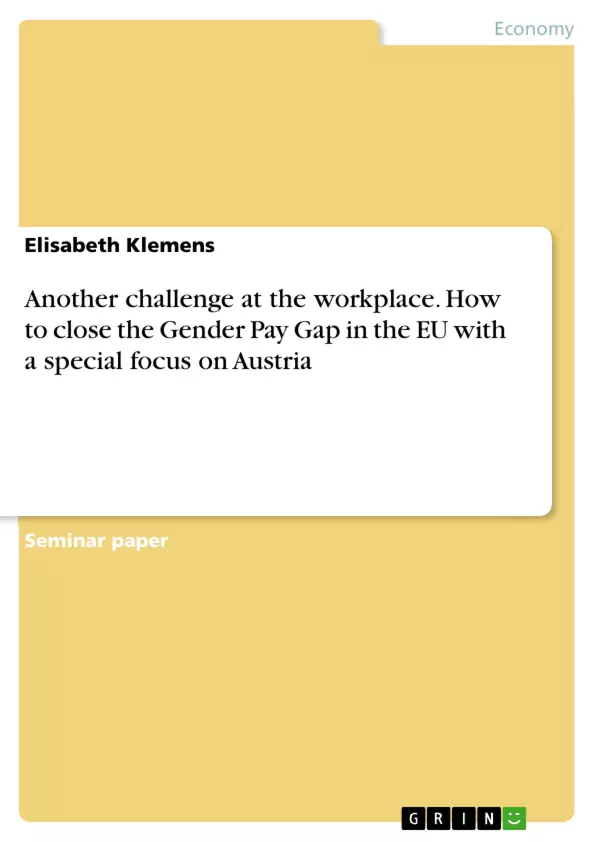In this paper the issue of the gender pay gap, a challenge women are still faced with at the workplace, will be considered. It will deal with the definition of the gender pay gap and the status quo in the European Union, especially in Austria. What is more, reasons for its existence, measures and policies how the gap can be closed will be outlined and the benefits in case of the closure will be presented, too. Closing the gender pay gap is an important step towards gender equality and does not only benefit the female workforce itself, but also companies and the economy as a whole.
Inhaltsverzeichnis (Table of Contents)
- INTRODUCTION.
- DEFINITION OF THE "GENDER PAY GAP".
- STATUS QUO.
- REASONS FOR THE GENDER PAY GAP.
- MEASURES AND POLICIES TO CLOSE THE GAP
- GOVERNMENTAL POLICIES.
- NON-GOVERNMENTAL MEASURES.
- BENEFITS.
- CONCLUSION.
- REFERENCES.
- REGISTER OF ILLUSTRATIONS...
Zielsetzung und Themenschwerpunkte (Objectives and Key Themes)
This paper examines the gender pay gap, a persistent challenge for women in the workplace. It aims to define the concept, analyze the current situation in the European Union (EU) with a focus on Austria, explore the reasons behind the gap, and outline potential measures and policies for its closure. Additionally, the paper highlights the benefits of closing the gender pay gap for both individuals and the economy.
- Definition and calculation of the gender pay gap.
- Status quo of the gender pay gap in the EU and Austria.
- Factors contributing to the gender pay gap.
- Measures and policies to close the gender pay gap.
- Benefits of closing the gender pay gap for individuals, companies, and the economy.
Zusammenfassung der Kapitel (Chapter Summaries)
- Introduction: Introduces the topic of the gender pay gap as a challenge faced by women in the workplace. Highlights the importance of closing the gap for gender equality and its impact on the global female population. The chapter also outlines the key questions addressed in the paper, focusing on the EU and Austria.
- Definition of the "gender pay gap": Provides a clear definition of the gender pay gap as the difference in earnings between men and women for the same work, referencing relevant sources like Cambridge Dictionaries Online and the Organisation for Economic Co-operation and Development (OECD). It further clarifies that the data refers to full-time employees and outlines the formula for calculating the gap.
- Status quo: Presents a graphical representation of the gender pay gap across EU member states in 2013. Highlights the EU average and compares the gap in Austria to other countries, including Estonia and Slovenia. The chapter analyzes the trend of the gender pay gap in Austria since 2007 and discusses the factors influencing its development.
Schlüsselwörter (Keywords)
The paper focuses on the key themes of the gender pay gap, gender equality, and economic disparities between men and women. It examines the current status of the gender pay gap in the European Union, specifically in Austria, and analyzes the factors contributing to this gap. The work explores various governmental and non-governmental measures to close the gap and presents the benefits of achieving gender pay equality for individuals, companies, and the broader economy.
- Quote paper
- LLM BSc Elisabeth Klemens (Author), 2016, Another challenge at the workplace. How to close the Gender Pay Gap in the EU with a special focus on Austria, Munich, GRIN Verlag, https://www.hausarbeiten.de/document/1298522


